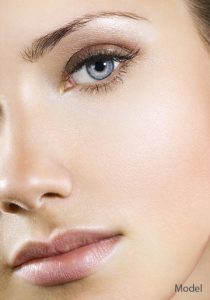 If you are experiencing excessive eye tearing, also known as epiphora, you may be looking for effective treatment options to alleviate this bothersome symptom. Fortunately, there are various remedies available to help address the underlying causes of eye tearing and provide relief. In this blog post, we will explore the causes of excessive eye tearing, the role of an oculoplastic surgeon in its treatment, surgical procedures that may be necessary, the importance of post-surgery care, and alternative treatments and therapies that can help manage this condition. Khan Eyelid and Facial Aesthetics, led by oculoplastic and reconstructive surgeon Dr. Tanya Khan, provides eyelid surgery to patients in Plano, Dallas, Austin, Texas, and surrounding locations.
If you are experiencing excessive eye tearing, also known as epiphora, you may be looking for effective treatment options to alleviate this bothersome symptom. Fortunately, there are various remedies available to help address the underlying causes of eye tearing and provide relief. In this blog post, we will explore the causes of excessive eye tearing, the role of an oculoplastic surgeon in its treatment, surgical procedures that may be necessary, the importance of post-surgery care, and alternative treatments and therapies that can help manage this condition. Khan Eyelid and Facial Aesthetics, led by oculoplastic and reconstructive surgeon Dr. Tanya Khan, provides eyelid surgery to patients in Plano, Dallas, Austin, Texas, and surrounding locations.
Understanding the Causes of Excessive Eye Tearing
Excessive eye tearing, or epiphora, can stem from a myriad of issues ranging from environmental irritants to more complex anatomical problems. One common cause is blocked tear ducts, where the natural drainage system for tears is obstructed, leading to an overflow of tears onto the face. This condition can be congenital, meaning present from birth, or develop as a result of inflammation, infection, or injury.
Dry eye syndrome is another prevalent contributor to excessive tearing. Contrary to what might be expected, dry eyes can trigger an overproduction of tears as a reflex response to the irritation or dryness experienced. This condition is often exacerbated by factors such as prolonged screen use, environmental conditions, and certain medications.
Allergies represent a further cause, where the eyes become irritated by allergens such as pollen, dust, or pet dander. This irritation can stimulate excessive tear production as the body attempts to flush out these foreign substances.
Infections, whether viral, bacterial, or fungal, can also lead to increased tear production as part of the body’s defense mechanism against the invading pathogens. Conditions such as conjunctivitis or blepharitis are known to cause significant eye tearing alongside other symptoms.
Structural abnormalities, including issues with the eyelids or the positioning of the tear drainage system, can disrupt the normal flow of tears, causing them to spill over. Problems such as ectropion (where the eyelid turns outward) or entropion (where the eyelid turns inward) can lead to tear film dysfunction and subsequent excessive tearing.
Understanding the specific cause behind the excessive tearing is pivotal in tailoring an effective treatment plan. A thorough examination by an eye care professional or an oculoplastic surgeon can help identify the root cause and guide the course of treatment to provide relief from this condition.
The Role of an Oculoplastic Surgeon in Treating Eye Tearing
An oculoplastic surgeon plays a pivotal role in addressing excessive eye tearing, offering specialized expertise that bridges ophthalmology and plastic surgery. These surgeons are uniquely qualified to tackle the complexities of the eyelids, tear drainage system, and surrounding orbital structures, ensuring that patients receive comprehensive care tailored to their specific condition. When dealing with excessive eye tearing, an oculoplastic surgeon’s approach begins with a detailed assessment to pinpoint the exact cause, whether it be anatomical abnormalities, blocked tear ducts, or issues with the eyelids themselves.
Their training allows them to diagnose conditions that may not be apparent to general practitioners or standard ophthalmologists, providing insights into less obvious causes of eye tearing. For instance, the misalignment of the eyelids or a partially obstructed tear duct might require a nuanced understanding and approach that these specialists can offer. Once a diagnosis is made, the surgeon will discuss potential treatment options, which may range from nonsurgical interventions to advanced surgical procedures designed to correct the underlying issue.
Surgical solutions offered by an oculoplastic surgeon can include intricate procedures such as the modification of the eyelid’s position to ensure proper tear drainage or the creation of a new tear duct pathway to bypass blockages. The decision to proceed with surgery is made with a careful consideration of the patient’s overall health, the severity of the tear dysfunction, and the likely outcome of the operation.
Moreover, these surgeons are adept at performing these delicate procedures with an eye towards not only functionality but also aesthetics, ensuring that the result is as natural-looking as possible. They utilize the latest techniques and technologies to minimize discomfort and expedite the healing process, aiming for the best possible patient experience and outcome.
In the journey to alleviate excessive eye tearing, the expertise of an oculoplastic surgeon is indispensable. Their role extends beyond mere surgical intervention; they provide a tailored, sophisticated approach to each patient’s unique situation, embodying the intersection of medical necessity and meticulous care in the treatment of eye tearing issues.
When Surgery Is Necessary: Understanding the Procedures
Surgical interventions can play a pivotal role in the treatment of excessive eye tearing when more conservative measures have failed to provide relief. Two common surgical techniques utilized for this purpose are dacryocystorhinostomy (DCR) and endoscopic dacryocystorhinostomy (endo-DCR). Both procedures aim to resolve issues with blocked tear ducts, which are a significant cause of epiphora.
DCR surgery involves creating a new channel for tears to drain from the eye into the nasal cavity, effectively bypassing the blocked portion of the tear duct. This can be done through an external approach, where a small incision is made on the side of the nose, or via an endoscopic approach, which is conducted through the nasal passages without external incisions. The endoscopic method is less invasive and usually results in shorter recovery times and less scarring.
Endo-DCR, on the other hand, utilizes advanced endoscopic technology to achieve similar results as traditional DCR but with enhanced precision and minimal invasiveness. This procedure is performed entirely through the nostrils, offering a faster healing process and reduced discomfort for the patient. It is particularly beneficial for those who are concerned about the cosmetic outcomes of surgery or have underlying health conditions that make them less suitable for more invasive procedures.
Both DCR and endo-DCR are highly effective in restoring proper tear drainage, offering long-term solutions for patients suffering from excessive tearing due to blocked ducts. The choice between these techniques depends on various factors, including the patient’s specific anatomical considerations, the surgeon’s expertise, and the patient’s preferences regarding recovery and cosmetic outcomes. Prior to surgery, patients undergo a comprehensive evaluation to determine the most appropriate approach for their unique situation, ensuring the highest chances of success and patient satisfaction.
The Importance of Post-Surgery Care
Following a procedure to address excessive eye tearing, adhering to your oculoplastic surgeon’s instructions for aftercare is paramount. This tailored guidance typically encompasses a regimen of prescribed medications, such as antibiotics or anti-inflammatory eye drops, to prevent infection and manage any discomfort. It’s also advised to shield the eyes from potential irritants — for instance, by wearing sunglasses when outdoors to protect against wind and sunlight, which could exacerbate symptoms during the healing phase.
Restrictions on physical activities, including heavy lifting or strenuous exercise, are common directives post-surgery to avoid any undue pressure on the eyes, which could interfere with the healing process. Additionally, it may be recommended to keep water out of the eyes for a certain period, necessitating caution during activities such as showering or swimming.
Scheduled follow-up visits with your surgeon are an integral component of post-operative care. These appointments allow the doctor to assess the healing progress, address any concerns, and make adjustments to the treatment plan as necessary. During these check-ins, patients have the opportunity to report any unusual symptoms or side effects they’ve been experiencing, ensuring any potential complications are caught and addressed early.
By rigorously observing these post-surgery care protocols, patients can significantly enhance their recovery experience and outcomes. This diligent approach to aftercare supports the body’s healing mechanisms, aiming to expedite the return to normal activities and achieve the desired relief from symptoms of excessive eye tearing.
Alternative Treatments and Therapies
For those seeking non-surgical solutions to excessive eye tearing, several alternative treatments and therapies offer significant relief. Utilizing artificial tears or lubricating eye drops regularly can address symptoms associated with dry eye syndrome, a common contributor to epiphora. These over-the-counter solutions help maintain moisture in the eyes, mitigating the reflex tear production triggered by dryness.
Allergy sufferers may find respite in antihistamine or anti-inflammatory allergy medications, which can reduce the inflammation and irritation caused by common allergens, thereby decreasing tear overproduction. Implementing a routine of warm compresses can also soothe the eyes and relieve blockages in the tear ducts, promoting better tear drainage.
Maintaining proper eyelid hygiene is another crucial step in managing eye tearing, particularly for individuals experiencing symptoms due to infections like blepharitis. Gentle cleaning of the eyelids with baby shampoo or prescribed cleansers can remove irritants and reduce the risk of tear duct blockages.
For those whose lifestyle factors contribute to their symptoms, adjustments such as reducing screen time, taking frequent breaks during prolonged exposure to digital screens, and ensuring adequate humidification in living and workspaces can also help alleviate excessive tearing.
These therapies, while beneficial, are often most effective when used in conjunction with professional medical advice. Consulting with an eye care professional can help determine the most appropriate combination of treatments based on the specific causes and severity of the eye tearing. By exploring these non-invasive options, individuals suffering from epiphora can often find considerable relief, improving their quality of life without the need for surgical intervention.
CONTACT Khan Eyelid and Facial Aesthetics AND OCULOPLASTIC & RECONSTRUCTIVE SURGEON DR. TANYA KHAN TODAY TO SCHEDULE AN APPOINTMENT
For more information about procedures and treatments at Khan Eyelid and Facial Aesthetics by Ophthalmic surgeon Dr. Tanya Khan. Click here to contact us.
Taking patients from in and around Dallas, Plano, Fort Worth, Grapevine, Garland, Mesquite, Carrollton, Irving, Frisco, Texas and more.









Schedule a Consultation: 972-EYE-LIDS (393-5437)